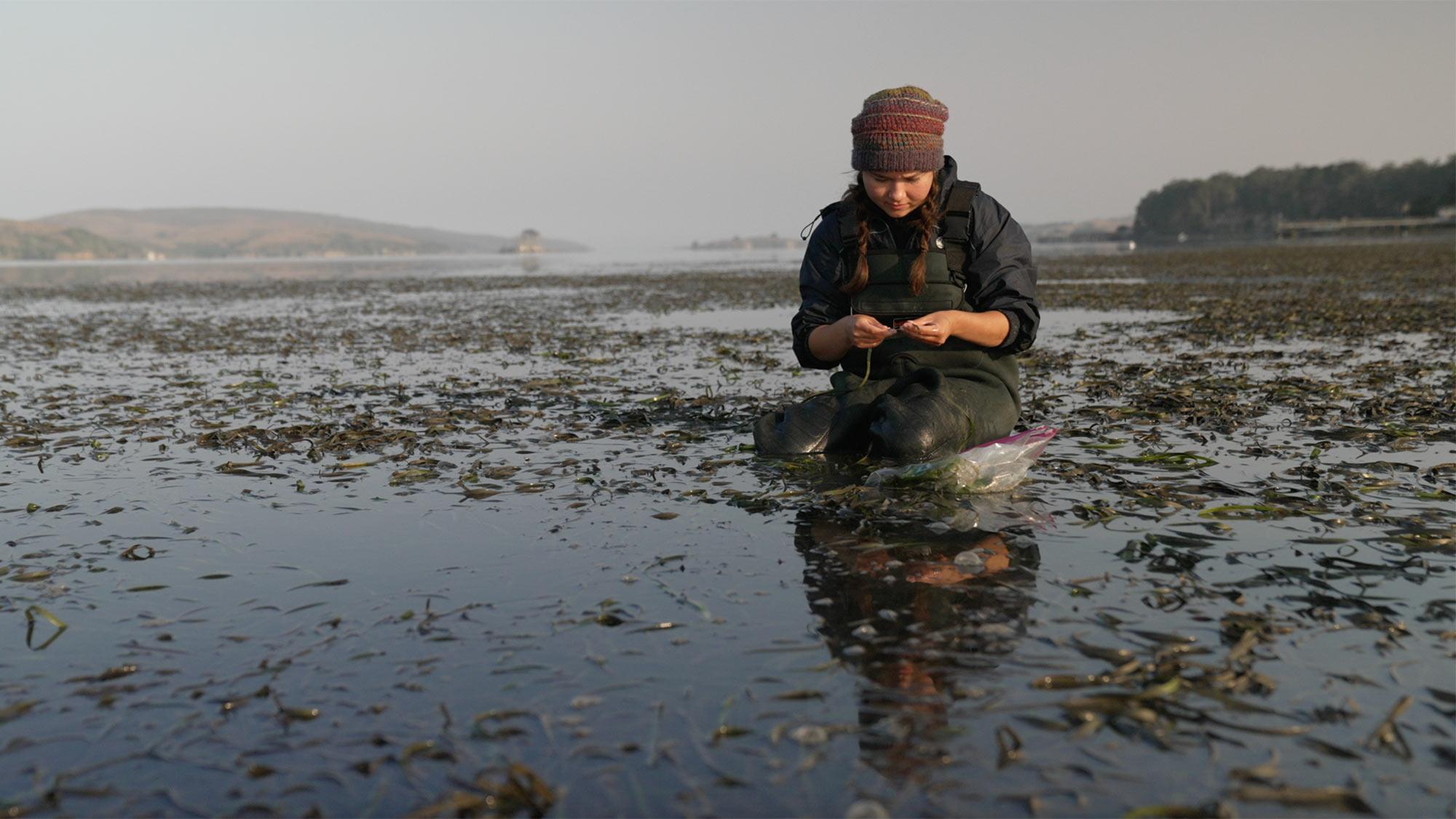UC Davis junior Caroline Donohew watched the everyday power of biology in just five minutes during her summer session class at UC Davis’ Bodega Marine Laboratory, or BML, a coastal research and education facility about 100 miles west of campus.
While observing a mussel’s muscle through a microscope, “I saw it create a byssal thread in real time,” said Donohew, who is from San Anselmo. “And it was just so cool.”
Mussels have an actual muscle called a foot that secretes a “liquid that hardens when it comes into contact with seawater,” Donohew explained. “They stick their little foot down on the rock, pull it back and there’s a thread.”
Experiences like this are available to UC Davis students across all fields. As an R1 university, UC Davis is part of a prestigious group of universities that is conducting research at the highest level. Fewer than 200 institutions in the U.S. have this classification. Over 50% of UC Davis undergraduate students conduct research and creative projects beyond the classroom, and a major new career initiative aims to have 100% participate in experiential learning, including research, before they graduate.
At BML, the “Coastal Marine Research” (BIS 124) class trains undergraduates in all aspects of the research process through seminars before students conduct their own independent research projects in teams of two. For her part, Donohew wanted to know what environmental factors determine the number of threads mussels produce.
Undergraduates have unique research opportunities in marine research
With participants living at BML, sharing meals together, frequently discussing each other’s work and projects, the community reflects the larger goals of UC Davis of having talented students collaborate, rather than compete.
Donohew and her partner designed an experiment to study if mussels would produce more byssal threads when in the presence of waterborne chemical cues from sea stars and rock crabs, both of which are predators of mussels.
“We found that mussels in the presence of sea star cues produce significantly more byssal threads than in the presence of no chemical cues from any predators,” Donohew said, describing the experiment’s results as “statistically significant.”
Summer sessions offer hands-on research experiences
Donohew’s class was part of the first of two summer sessions offered at the lab each summer. The integrated program offers students of any major a multidisciplinary understanding of coastal systems through hands-on, research and field-based courses taught at BML. Students can sign up for up to 10 units each session with most students living on-site throughout their session. All courses require consent of the instructors via an application process.
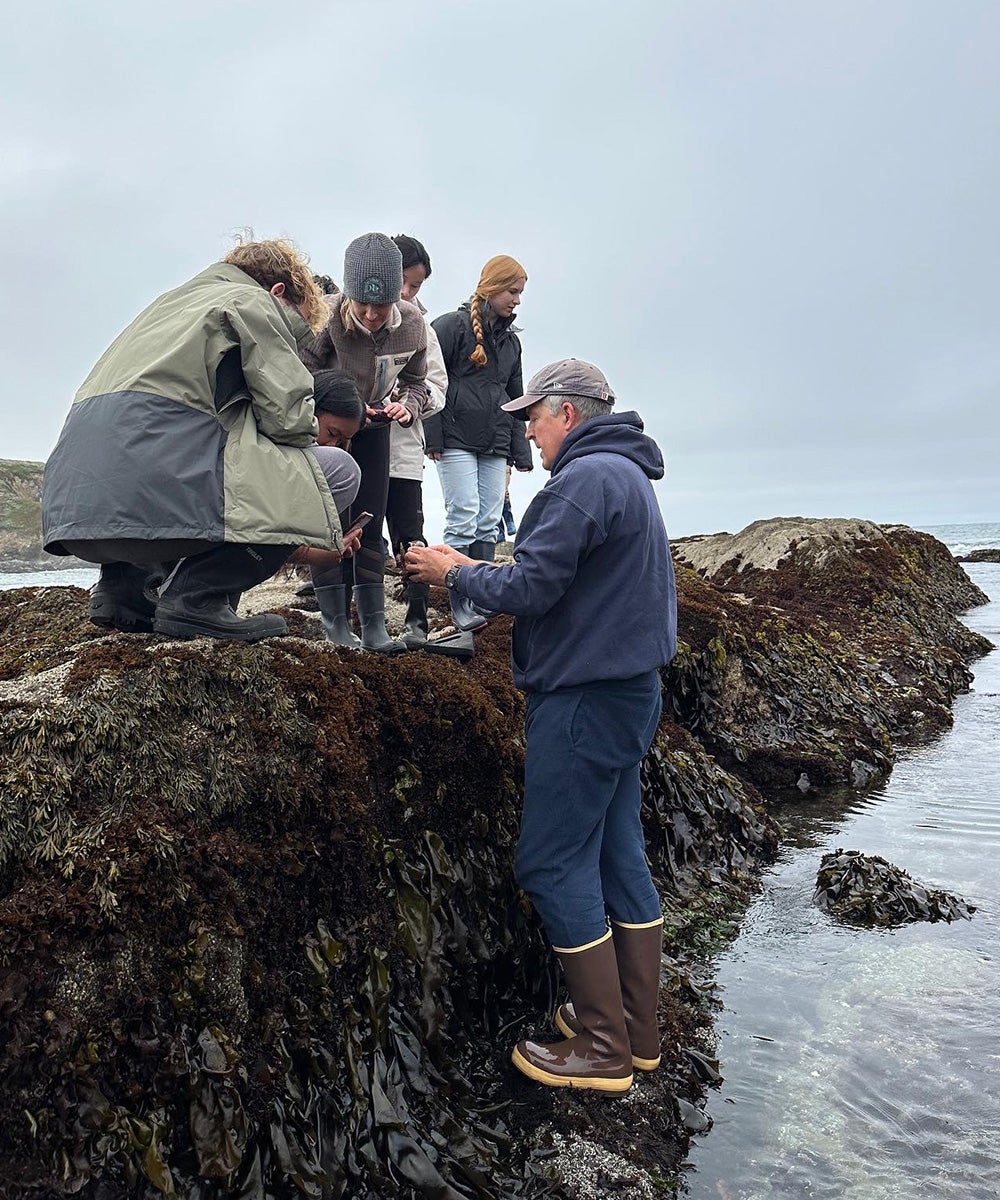
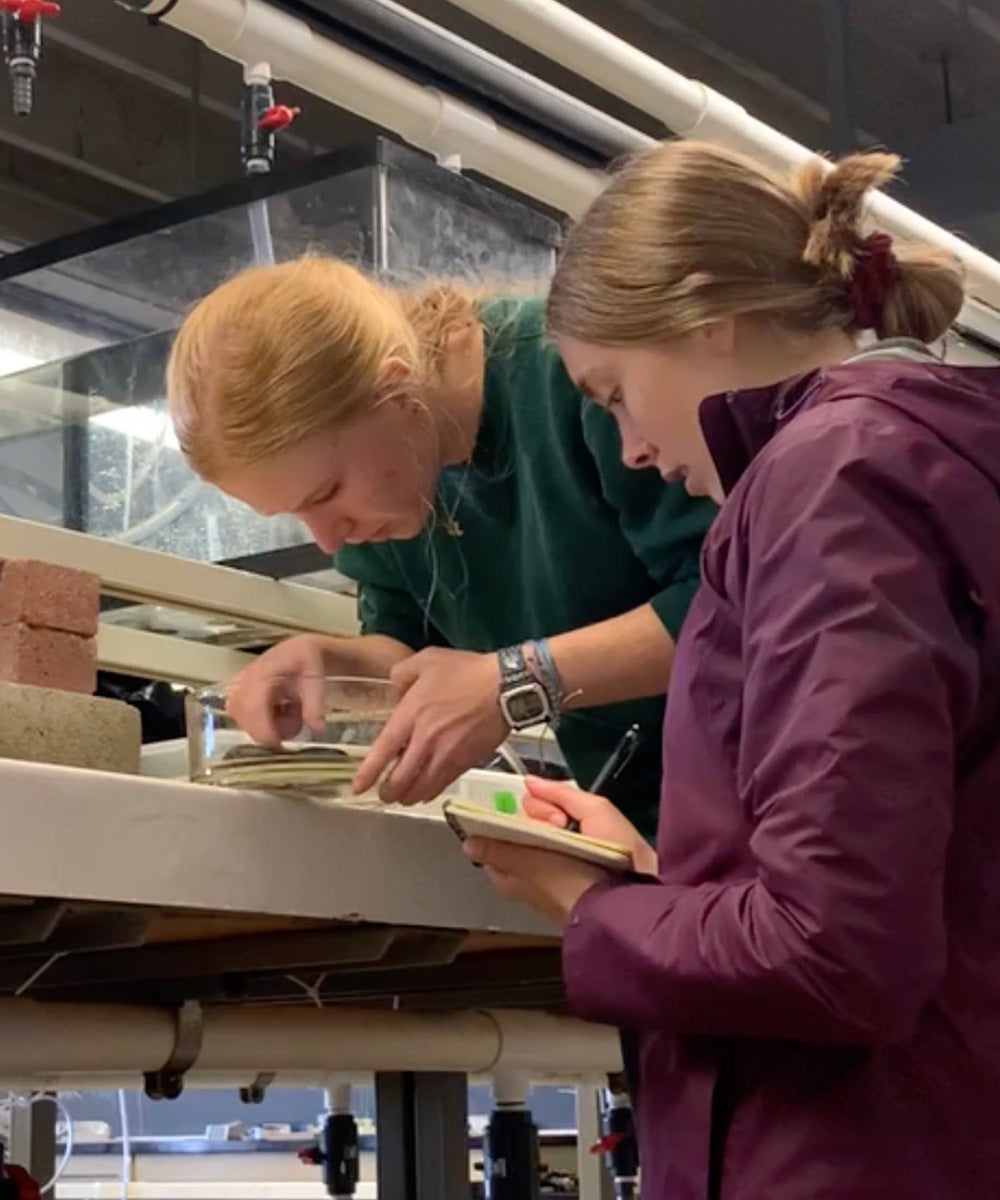
The courses offer field trips and hands-on labs with an emphasis on testing hypotheses through class experiments and independent research projects, giving students training and experience making observations, generating hypotheses, designing experiments, collecting and analyzing data.
The summer sessions also train students to communicate their research effectively to other scientists and the general public by producing scientific outreach videos. These three-minute films summarize their research projects and premiered at a film festival at BML in August. Check out Donohew’s video.
EVE scholars program provides a student research pathway
While these summer session classes introduce students like Donohew to research, additional opportunities give students more intensive pathways to develop their research abilities. Professor Jay Stachowicz, a faculty member who works both at the marine lab and on the Davis campus noted that it is important to give students “a way to get involved in a more systematic way in independent research,” he said.
What Stachowicz and others started as a handful of individual scholarships became a full-fledged scholarship program this year with the introduction of the Evolution and Ecology, or EVE, scholars program.
“Students spend an entire summer devoting their full time to a research project that they design with their faculty mentor,” Stachowicz explained. “And then we work with them to help analyze their data, evaluate hypotheses and communicate the story their findings tell to a broader audience.”
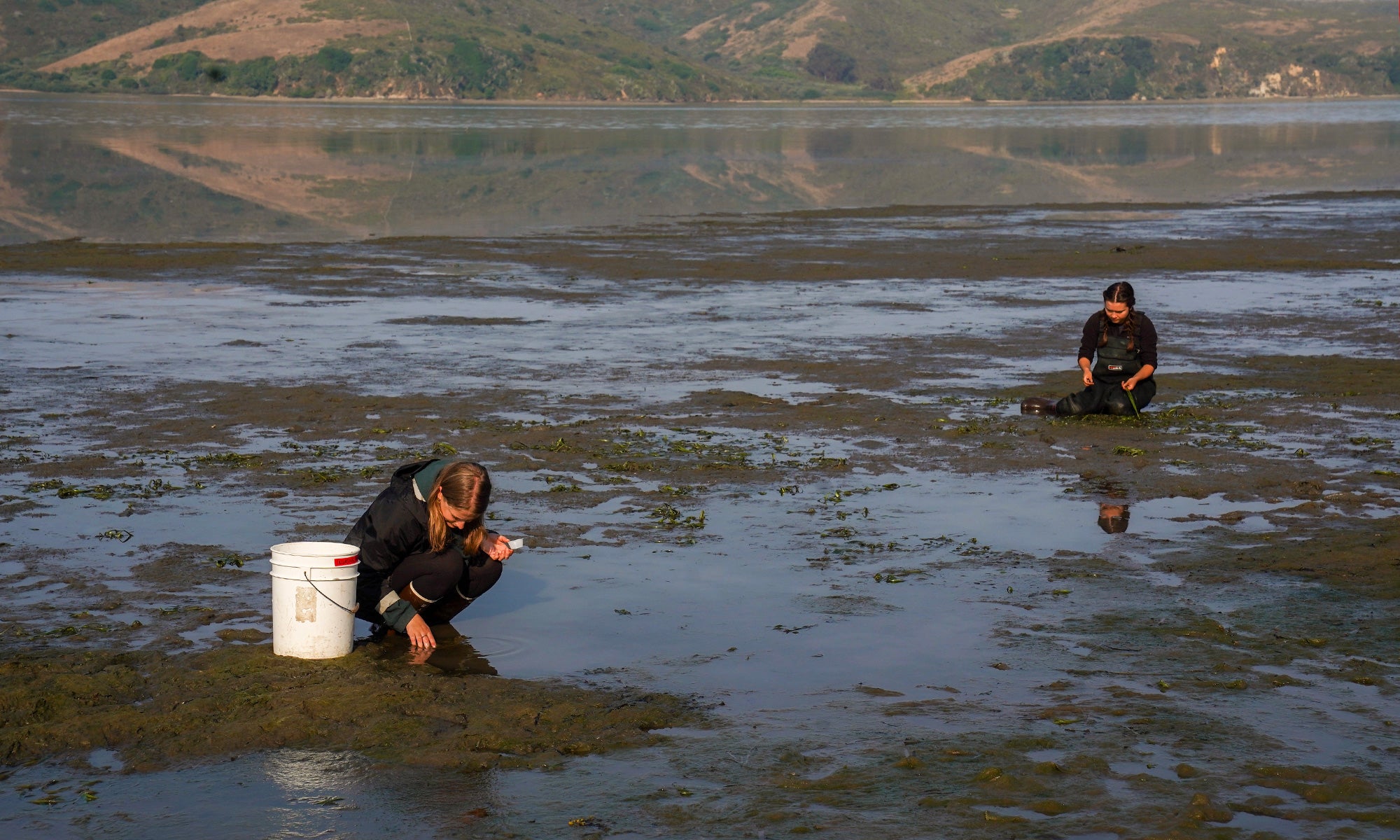
Hosted by UC Davis Department of Evolution and Ecology, the program is supported by the Kendra M. Chan fellowship, the Nieland Family Fund, The Osborne Chair fund, the Coastal and Marine Sciences Institute and other donors. EVE scholars are awarded a stipend for a 10-week internship to allow undergraduate students to conduct full-time independent research under the direction of a faculty member either on the Davis campus or at the marine lab in any area of ecology or evolution.
The program also includes a one- to two-unit course offered in fall quarter for fellows to develop data analysis and presentation skills, culminating in the production of a poster presentation of the research results to the EVE community.
“Our focus is really on giving the students an immersive summer research experience, where we pay them,” Stachowicz said, “because that allows them to devote full-time” to the program.
An undergraduate’s introduction to marine science
EVE scholar Malia Reiss is an incoming fourth-year with an environmental science management major and minors in ecological restoration and writing. She was mentored by professors Stachowicz and Anya Brown.
“I always have wanted to do marine systems, but I’m not a marine major,” Reiss explained, noting her previous research analyzing terrestrial plants in high alpine and grassland ecosystems, but nothing related to the ocean.
I’ve always had a really personal connection with the ocean. Growing up on the coast, that’s like my space,” said Reiss, who grew up in Venice, in Southern California. “When I saw the application, I was, like, ‘Sure!’”
Reiss’ research focuses on how seagrass wasting disease is impacting the local eelgrass population in Bodega Bay, which supports a diverse array of crabs, fishes and seabirds.
Challenges and triumphs of marine research
Reiss’ summer roommate, fellow EVE scholar Zoe Brumbaugh, from Santa Rosa, is researching a newly identified invasive anemone in Tomales Bay.
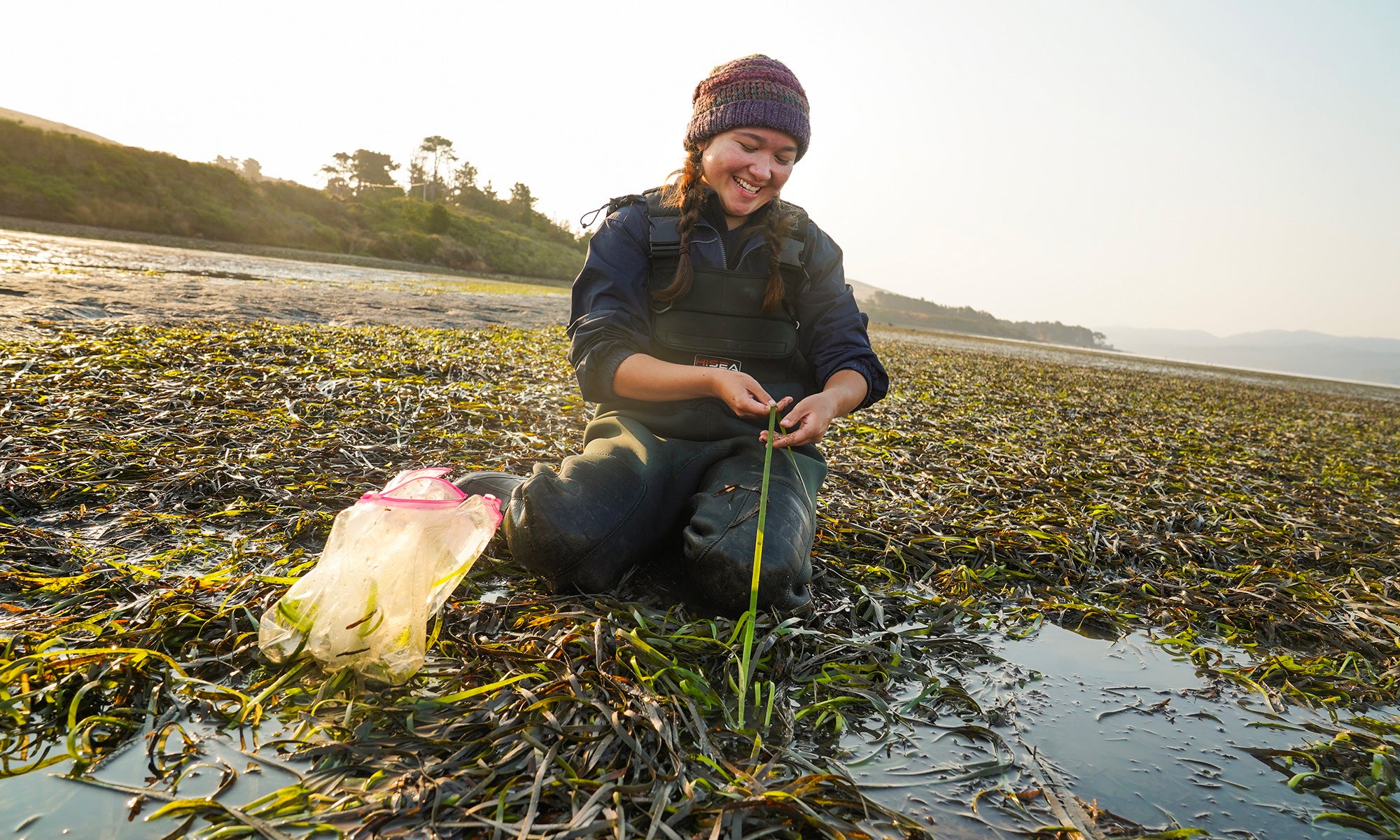
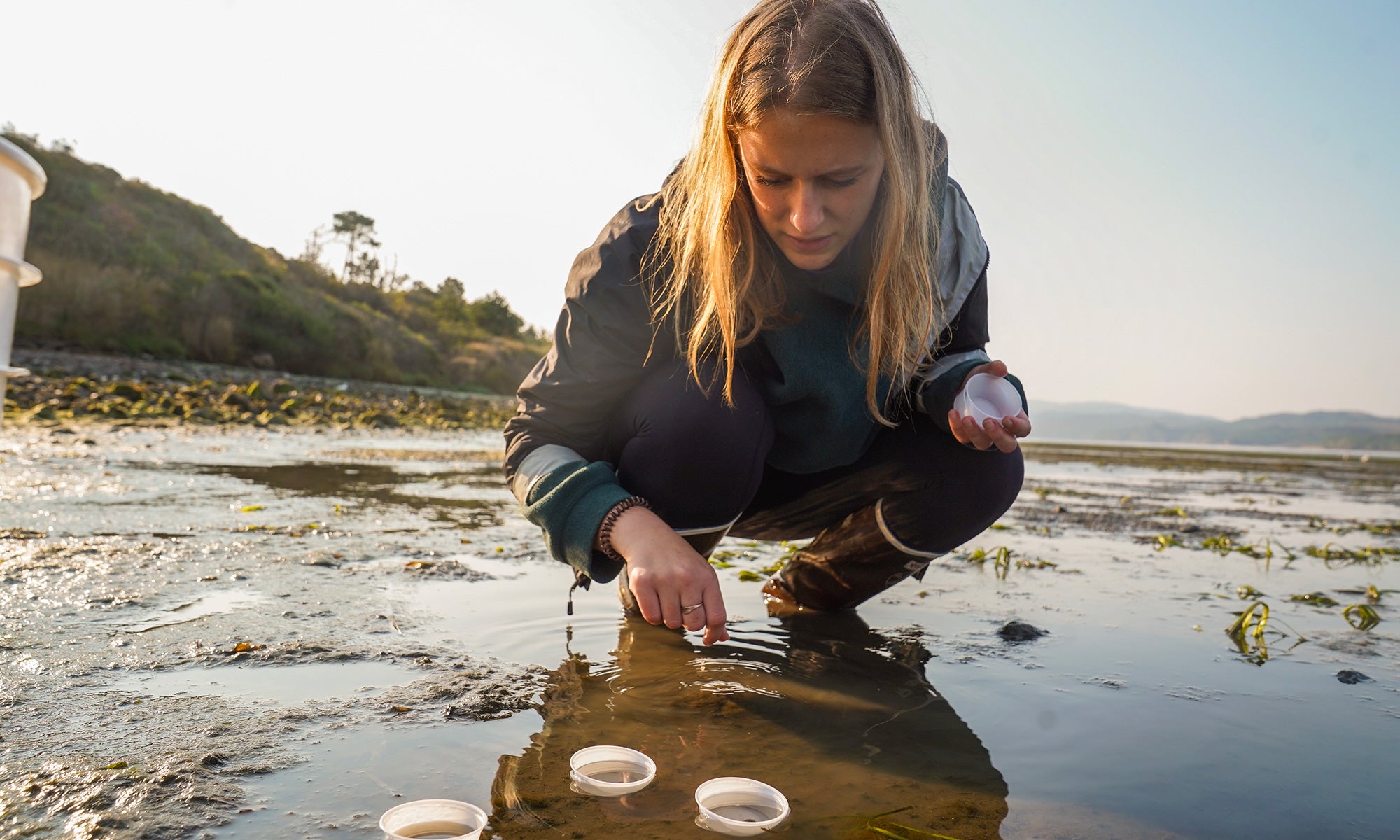
Reiss described the anemone as like “UFOs — they look scary,” while Brumbaugh said they’re “slightly spiky and bluish, greenish tinged.” As she starts her fourth year pursuing a degree in marine and coastal science, Brumbaugh has been helping Professor Eric Sanford and grad student Keira Monuki map this new anemone’s invasion success and track its impact on native species.
“We’re trying to figure out if they are asexually reproducing. One individual could then produce hundreds of them, theoretically.”
Trial and error are critical to research. Recently, Reiss realized this hard reality when one of her experiments led to data that “was all over the place. It was so frustrating and overwhelming.”
She found solace in a familiar place.
“I just went to the beach, which is like 15 minutes away and just chilled out for like an hour and then went back to the lab,” she said. “That’s what’s cool and so nice about the length of the program — you get to keep asking questions and figure out new things.”
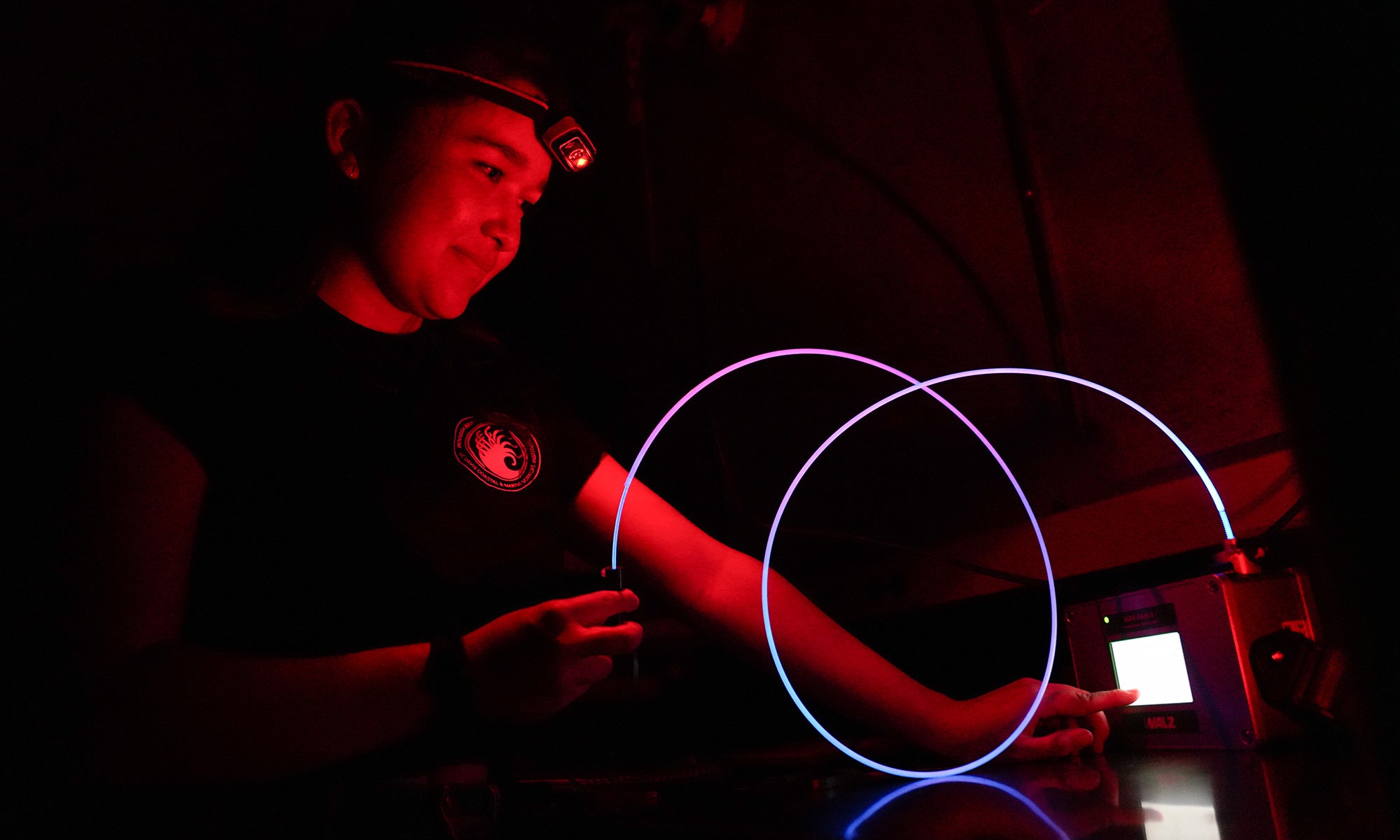
The students’ research is bound to the tides of the oceans. Low-tide weeks allow for onsite collection and observation, while high-tide weeks emphasize lab work, analysis and presentation of the data collected. Though a summer spent with new friends by the ocean sounds great, the work is demanding and a race against time.
I like to joke that my whole life is governed by the tides,” Brumbaugh explained.
“I knew tide cycles existed, but you’re really limited. Like you have a low-tide week and it’s super intense. You’re working 12-hour days,” Reiss said. “For my research, I’m walking on my knees for like an hour in the mudflats and then that next week, it’s super chill. I work in the tanks, and Zoe is staring at anemones in the lab for multiple hours at a time.”
Hope for future marine scientists despite climate change
Climate change “is affecting everyone’s research,” Brumbaugh explained, noting that the Tomales Bay, where her and Reiss’ research takes place, is a microcosm of larger warming patterns worldwide. “It’s an area that experiences a really strong thermal gradient. It’s a place where a lot of questions about ocean warming get raised because there are these organisms experiencing such a range of conditions.”
And the future of these summer opportunities at the lab starts with those who can inform a new generation.
“The groundswell of interest from faculty and students in this program is really encouraging,” Stachowicz said. “This isn’t a program that can work without the dedication of UCD faculty and hard work of our amazing undergraduates.” He said he hopes stories on the EVE Scholars “will help highlight other programs on campus with similar goals and inspire others to develop their own.”
Media Resources
Media Contacts:
- Julia Ann Easley, UC Davis News and Media Relations, 530-219-4545, jaeasley@ucdavis.edu
- Kat Kerlin, UC Davis News and Media Relations, 530-750-9195, kekerlin@ucdavis.edu
Press kit of downloadable images.
